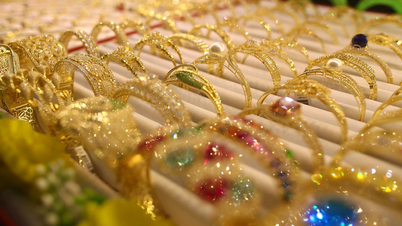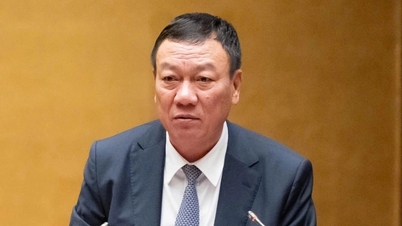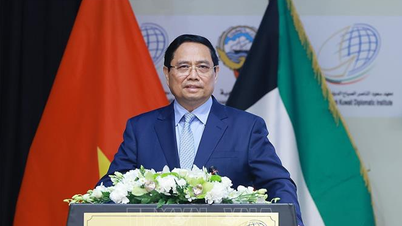The People's Bank of China's public gold purchases this year have been very low, just 1.9 tonnes in August; 1.9 tonnes in July and 2.2 tonnes in June.
Some international analysts believe that the amount of gold China buys may be higher than the published figures, due to the difference between trade data and official reports.
Analysts at Societe Generale estimate, based on trade data, that China's total purchases could reach 250 tonnes this year, accounting for more than a third of global central banks' total gold demand.
China’s official gold buying program, managed by the PBOC’s State Administration of Foreign Exchange (SAFE), has only bought 25 tonnes this year. Gold reserves are typically held in Shanghai or Beijing.
SAFE has one-year and five-year gold purchase targets, and current reserves are still far below those targets, according to a former SAFE official. Some reports suggest that other state-owned entities are also involved in gold trading, but details are not publicly available.

Employees arrange products at a store in China (Photo: China Daily).
Another method is to calculate the difference between China's net imports and domestic gold production, as well as the change in gold held by commercial banks or purchased by retail consumers.
Based on this method, Plenum Research, a consultancy in Beijing, calculates the difference between official purchases at 1,351 tonnes in 2023 and 1,382 tonnes in 2022, more than six times the public purchases China made in those years.
The data is further complicated by the fact that China is the world's largest gold miner, accounting for 10% of global output last year. This means it can buy gold domestically for its reserves.
Mr. Jeff Currie, Director of Energy Strategy at financial company Carlyle, said that China's gold buying trend may be related to efforts to diversify foreign exchange reserves, similar to many other economies .
No one can predict how much gold China is buying, experts added. Traders currently have to rely on indirect data, such as the number of new 400-ounce gold bars minted with consecutive serial numbers.
Bruce Ikemizu, director of the Japan Gold Market Association, said that this year people really don't believe the official figures, especially in China. Many experts believe that China's current gold reserves are close to 5,000 tons, double the public figure.
Central banks have been buying large amounts of gold in recent years, helping push prices above $4,300 an ounce. Data from the World Gold Council (WGC) shows that over the past decade, gold's share of global reserves outside the US has increased from 10% to 26%, making it the second-largest reserve asset after the US dollar.
In the most recent quarter, only about a third of official purchases were publicly reported, down from about 90% four years ago, according to WGC estimates based on Metals Focus data.
This opacity makes the gold market less predictable than commodities like oil, where OPEC plays a role in regulating production. Central bank gold flows in and out have a huge impact, said Michael Haigh, an analyst at Societe Generale.
China is the world's largest producer and consumer of gold, but data on China's gold reserves are often not updated regularly, forcing experts to rely on a variety of statistical sources to make estimates.
Source: https://dantri.com.vn/kinh-doanh/chuyen-gia-the-gioi-roi-vi-khong-ro-trung-quoc-thuc-su-nhap-bao-nhieu-vang-20251116180806951.htm









































![[Photo] General Secretary To Lam and National Assembly Chairman Tran Thanh Man attend the 80th Anniversary of the Traditional Day of the Vietnamese Inspection Sector](https://vphoto.vietnam.vn/thumb/1200x675/vietnam/resource/IMAGE/2025/11/17/1763356362984_a2-bnd-7940-3561-jpg.webp)

































































Comment (0)